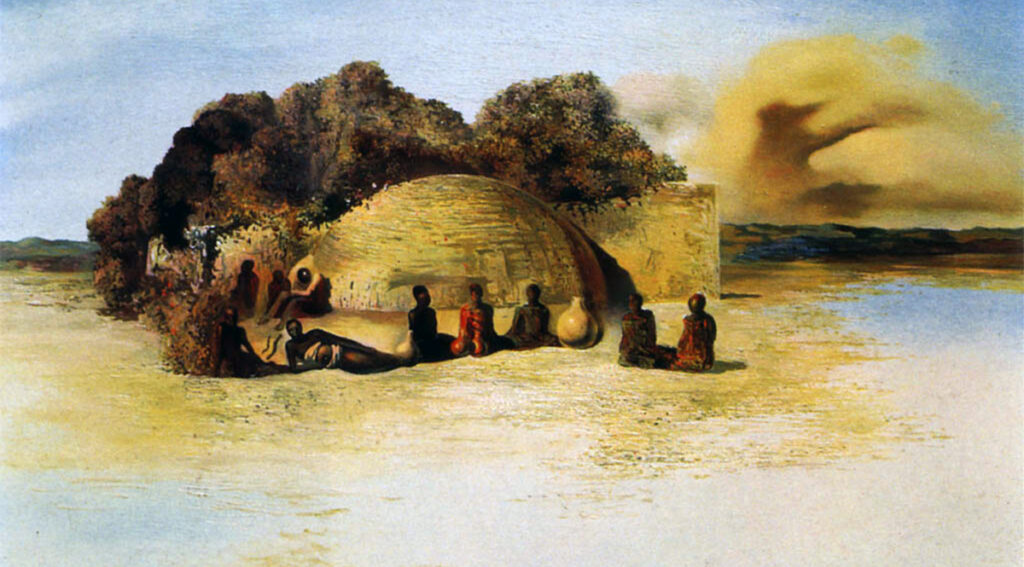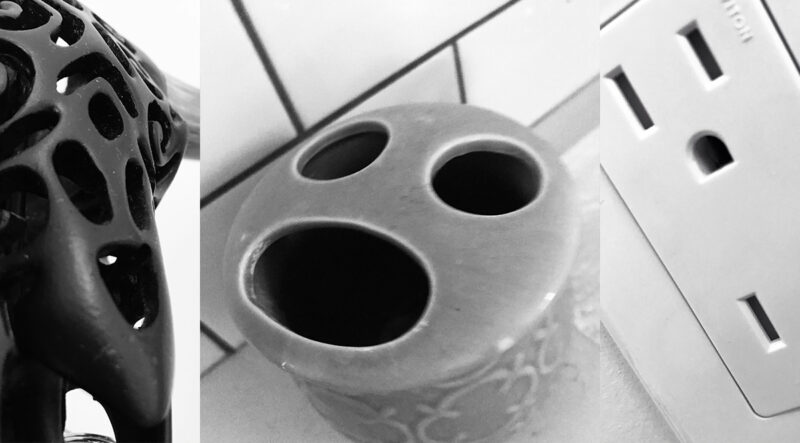Like many scientific fields, the paranormal is governed by rules, scientific theories and experiments.
This composite patchwork, combined with elements from mathematics, physics and quantum theories, is defined by a particular vocabulary. Some words are unique to the paranormal subject, while others are borrowed from other fields to define key concepts.
One of the key concepts not exclusive to the spirit world, but essential to research, is the concept of pareidolia. Even if it is not new, it has become more prominent recently due to the proliferation of paranormal TV shows and due to the increase in faked or misinterpreted pieces of evidence.
Origin
Pareidolia is derived from the Greek words pará (meaning: beside, alongside, instead of) and eídōlon (shape, form or image).
The German use of pareidolie first appeared when it was used in articles by Karl Ludwig Kahlbaum, particularly his 1866 paper “Die Sinnesdelierien” (On Delusion of the Senses).
When Kahlbaum’s paper was reviewed the following year in The Journal of Mental Science, Volume 13, pareidolie was translated into English as pareidolia.
Definition and connections
Pareidolia could be defined as the tendency of the human mind to interpret one or multiple stimuli into a recognizable pattern or shape.
Whenever the human brain comes across something that is unknown or new, the brain will compare it to something similar that it recognizes.
The neurological reasoning behind it could be described in a two-step process:
- The human brain is wired in such a way as to deal with parallel processes to discover patterns, create associations and analyze a vast array of data
- The brain compares that stimulus to all the possible matches in its internal memory and identifies it to the closest one
There is even a specific part of the visual association cortex — the fusiform face area — that is dedicated to recognizing and remembering faces.
This particular concept has a clear psychological connection. The main purpose of pareidolia is to help quicken the analysis of a given situation to determine risk factors, and therefore help us in our self-preservation.
One of the most common uses in psychology is the Rorschach inkblot test. It’s used to interpret a person’s subconscious emotions.
Yet pareidolia dates back centuries. Leonardo DaVinci claimed he noticed markings on stone walls, which he believed could help inspire his artworks.
Many other artists have used this unique characteristic of the brain in their works, such as Salvador Dalí’s in his Paranoiac Face and his Madonna of the Birds.

The application of pareidolia is not limited to art’s benefits as it is used daily without us even realizing it.
Typoglycemia
Typoglycemia is a neologism that defines the cognitive processes used in reading text. It is when the brain recognizes a word based on the first and last letter of that word, even if the in-between letters are scrambled.
Typoglycemia could also be defined as another form of pareidolia.
There are other examples such as apophenia, which is the process of seeing patterns in randomness, or hierophany, seeing the sacred in images.
All phenomena can increase the probability of misinterpreting images. And that is where it starts to complicate things in the paranormal field.
Effects in the paranormal field
Unfortunately, living in a world where information is available at any time, fame at any cost has become a goal for some paranormal enthusiasts. They do not hesitate to manipulate evidence for a TV show, an audience or views on the internet.
Technological advancements such as apps or computer programs have increased the numbers of fraudulent paranormal evidence. It makes it difficult, not only for the audience but also for fellow investigators, to judge and provide opinions on such evidence.
Most of the time, paranormal evidence is comprised of photos, videos and EVP. All of them possibly open to misinterpretation.
When reviewing photos and videos as paranormal evidence, investigators would look for full-body apparitions or partial body parts. Therefore, they already put themselves into a predisposed state of mind. So, how can we avoid the risk of misinterpreting evidence and remain as objective as possible?
This also brings to mind the effect of nature vs. nurture on our own pareidolia. How objective can an interpretation be? How impartial and deprived of any preconceived notions could we be in order to form an analysis?
Even a computer program would have to evaluate data provided to it, but how could that data be 100 percent unaltered due to missing info or unverified facts or incorrect data.
Twenty years ago, we believed that life needed light and an appropriate temperature to survive. That was until a few years ago when scientists discovered life surviving in the Aphotic zone, thousands of meters below the ocean surface on the sea floor.
Paul Annee and James Smith, of the British Antarctic Survey, were drilling through the 900-metre-thick Filchner-Ronne ice shelf. There, they came across 16 sponges accompanied by 22 other unidentified animals, 260 kilometres from the open water and in – 2°C water, and without sunlight.
Scientific knowledge is constantly evolving. What we knew 500 years ago is different that what we knew 100 years ago and is also different than from what we knew 20 years ago.
All of it is constantly being corrected to reflect what we know today thanks to the numerous scientific discoveries and breakthroughs, which is positive.
The negative, however, is that we as researchers knowingly or unknowingly, always face the risk of bias.
As paranormal investigators, we seek the smoking gun of evidence, but this could only be reached through extensive debunking.
Conclusion
Complete objectivity is unrealistic, no matter what field of research you are working in. But, pareidolia and similar concepts such as typoglycemia, apophenia or hierophany will without a doubt remain a potential risk. But they could also be seen as safeguards; to remind us to always debunk questionable evidence.
Furthermore, by imposing strict guidelines, we can limit the risks of tainted evidence to a minimum. For example, always take duplicate photos to debunk any anomaly at two different times. Although some of these extra efforts could seem repetitive tasks, even unnecessary, they might be the ones that confirm a piece of evidence as being truly paranormal.

